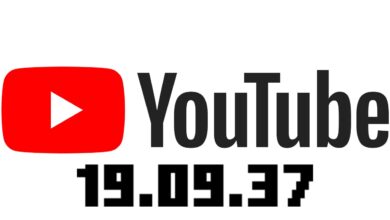How digital transformation is revolutionizing procurement processes
Within the quickly changing context of contemporary companies, digital transformation has become a vital force behind efficiency and innovation. Among other things, procurement is the most pronounced of the changes. The use of digital technologies in Procurement Outsourcing Services has changed how organizations find, acquire, and manage products and services. It combined efficiency, transparency, and strategic value. This article highlights key developments and benefits while examining the profound impact of digital transformation on procurement processes.
The Evolution of Procurement in the Digital Age
Historically, procurement was a tedious process with lots of manual paperwork, lengthy negotiations with suppliers, and complicated logistics, but the digital revolution has created a new era of business with consequences functional, simple, and seamlessly integrated), machine learning (ML).
Automation and Efficiency
One of the key benefits of the digital revolution in procurement is the automation of routine activities. Previously, purchasing teams, including those at FF&E Procurement Companies, had to handle purchase orders and invoice agreements.
Thanks to automation, procurement specialists may focus on strategic operations like supplier relationship management and cost optimization rather than being weighed down by paperwork. For example, automated systems that handle contract management, performance evaluation, and supplier selection can now be used to manage procurement more successfully. This change increases procurement operations’ accuracy and dependability in addition to increasing productivity.
Enhanced Supplier Collaboration
The digital shift has also affected how businesses interact with their suppliers. The majority of traditional supplier relationships were transactional and focused on cutting costs. But thanks to digital tools, procurement teams and suppliers may now work together more successfully to build enduring relationships that benefit both parties.
Between buyers and providers, digital platforms facilitate easy connection and information exchange. For example, cloud-based procurement solutions enable the capability of real-time information on order status, inventory levels, and delivery schedules, ensuring that all stakeholders are aware of any changes and can respond quickly to collaboration. This level reduces delays and inefficiencies and increases supply chain reliability and transparency.
Moreover, digital tools facilitate better supplier performance management. Procurement teams can create automated scorecards and dashboards to monitor vendor performance against critical metrics such as delivery timelines, quality standards, and contract compliance. Companies can instantly resolve issues of customer underperformance and identify underperforming vendors, forming closer alliances with them using a data-driven approach.
Risk management
Procurement needs to ensure compliance and manage risks effectively in the current global business environment. These fields have grown significantly as a result of digital transformation, which offers solutions that give procurement managers more information and control.
Additionally, digital solutions help companies manage risk by quickly managing and advising on any disruptions in the supply chain. Procurement teams can receive advance notice of supplier financial difficulties and geopolitical instability.
Sustainability and ethical Sourcing
Sustainability is currently a top concern for many firms, and one of the major elements influencing sustainable purchasing practices is digital transformation. By employing digital tools to track and analyze the effects of actions on goods, the environment, and society, companies may make sure that their procurement procedures adhere to sustainability objectives.
For instance, digital channels can be used by FF&E purchasing services (furniture, fixtures, and equipment) to keep an eye on suppliers’ sustainability credentials, which include things like energy usage, carbon footprint, and staff practices.
By integrating sustainability considerations into their procurement processes, organizations can reduce their impact on the environment, raising the perception of their brand among greater and more ethically selected suppliers.
Digital tools also facilitate ethical sourcing by making the supply chain more transparent. Teams in charge of procurement can keep an eye on where raw materials come from and make sure that vendors follow moral guidelines for ethical labor practices and responsible mineral sourcing. To satisfy the increasing consumer demand for items made ethically and protect their brand, businesses must adhere to this transparency.
The Future of Procurement in the Digital Era
AI-powered chatbots can cope with commonplace purchasing requests such as order popularity updates and invoice processing, releasing shopping professionals to cognizance on more complicated obligations. RPA can cut purchasing cycles by automating repetitive processes such as data entry and invoice matching and can reduce the chance of errors. In other words, by creating a virtual supply chain model, the digital twins enable companies to simulate situations and improve their procurement strategies.
Data-Informed Decision Making
For instance, Stainless Steel Manufacturers can use information analytics to monitor provider performance, music modifications in uncooked cloth fees, and optimize inventory levels. Using this facts-pushed device can help companies make faster selections, avoid delivery chain disruptions, and enhance provider contracts.
Conclusion
In summary, digital transformation includes improving supplier communication, facilitating data-driven decision-making, automating repetitive tasks, risk-improving management and compliance, and continuously improving procurement processes.




